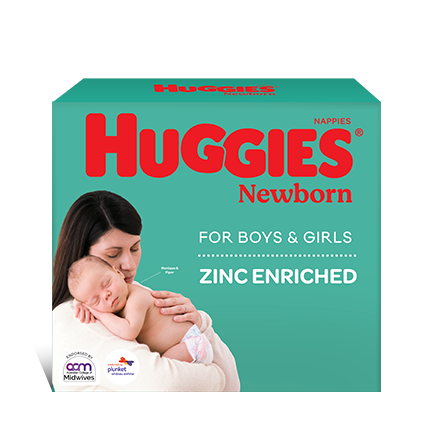A congenital disorder is a condition which a baby is born with. Though most babies are healthy at birth, some are born with conditions which affect their growth and development. It’s estimated that around 4,500 babies are born in Australia each year with significant birth defects – around 1.7%.
Congenital disorders can be detected during pregnancy and others are not diagnosed until after a baby is born. Other names for congenital disorders are congenital diseases, birth defects or birth abnormalities.
Congenital disorders range in how much they affect a child. Some conditions are treatable and can be modified with medical intervention. Other forms of congenital disease can affect a person throughout their life. Congenital disorders can also range in their severity from mild to severe.
What causes congenital disorders?
Congenital disorders can be inherited on genes from parents or relatives. Parents can be carriers of faulty genes, even though they may not have the condition themselves. Congenital disorders can also be caused by environmental factors.
How can I lower my risk of having a baby with a congenital disorder?
There is nothing you can do about the genetic material you are born with. But knowledge can be a powerful thing. Many expectant parents who know they have the genetic potential for having a child with a congenital disorder have genetic counselling. Their individual risk profile is assessed so they can make informed decisions about their fertility options.
General tips to lower the risk
- Avoid taking any medication, especially in the first trimester of pregnancy when the baby is forming.
- Take folic acid supplements to lower the risk of having a baby with neural tube defects.
- Eat a healthy diet.
- Avoid taking or using recreational drugs, cigarettes and alcohol when trying to conceive and in all trimesters of pregnancy.
- Control pre-existing medical conditions such as diabetes.
- Avoid environmental exposure to toxins, chemicals and pesticides.
- Have all recommended vaccinations, particularly for .
More common congenital disorders
Down syndrome
(NB Resolution, can be include a link here to the new article I’ve written in Batch 2 on Down syndrome)
is a genetic, chromosomal disorder where the baby has an extra copy of their 21st chromosome in their cells. So instead of having 46 chromosomes, they have 47. Down syndrome is the most common chromosome disorder that we know of. Down syndrome is diagnosed through genetic testing.
Cerebral palsy
Cerebral palsy can be caused during pregnancy when the brain is developing or, during birth because of injury. Cerebral palsy causes issues with muscle control and tone, posture and balance. Each person with cerebral palsy is affected differently and needs individual therapies and support to suit their situation. Cerebral palsy is diagnosed through assessments.
Cystic fibrosis
Cystic fibrosis is a genetic disorder which affects the lungs, pancreas, liver, intestine and pancreas. It is an inherited disease which is caused by mutations or changes on the baby’s 7th chromosome. Cystic fibrosis leads to life-long problems with breathing and mucous production, leading to frequent lung infections. Cystic fibrosis is diagnosed through blood testing.
Cleft lip and/or palate
A cleft palate or lip occurs very early in pregnancy when the two sides of the baby’s palate don’t join and close completely. A mother or father can pass on the genes which cause cleft palate or, the genes for which cleft palate is part of an overall syndrome. There can also be environmental factors which cause cleft palate. Cleft palate can be diagnosed on pregnancy ultrasound or at birth.
Spina bifida
Spina bifida is a neural tube defect, a condition where there is incomplete development of the brain, spinal cord and its coverings – the meninges. There are four types of spina bifida with some more obvious than others. Spina bifida can be diagnosed on pregnancy ultrasound and after birth by ultrasound or x-ray.
When is testing done for congenital disorders?
Generally testing can be done from 10 weeks of pregnancy, though it can be done later as well. Parents who are having fertility assistance can have their embryo tested at a few days old before it is implanted.
Most mothers choose to have a combined first trimester screening test which can be done between 11-13 weeks of pregnancy. This is via ultrasound and a blood test. Screening tests are designed to rule out babies who do not have congenital problems so the information they provide can be basic.
If the screening test detects problems with the baby’s growth or development, diagnostic testing will be recommended. Diagnostic testing can be done using a range of assessments including ultrasounds, blood tests, and amniocentesis.
It’s worth remembering that not all congenital disorders can be picked up on pregnancy screening and diagnostic testing.
Testing for congenital disorders
Testing for confirming congenital disorders can be done after pregnancy screening detects a problem. One of the most common testing procedures is Chorionic villus sampling (CVS) which is done between 10-13 weeks of pregnancy. CVS can detect Down syndrome and some other genetic disorders.
A small sample of cells from the placenta is collected using a needle. These cells are examined by a pathologist looking for genetic markers.
Amniocentesis
A fine needle is used to collect a sample of amniotic fluid – the waters surrounding the baby. This is generally done between weeks 15-18 of pregnancy. An ultrasound is done at the same time as the CVS and amniocentesis to make sure the needle is in the right place. There is a small risk of miscarriage after having CVS testing and amniocentesis.
Neonatal checking
Every baby is checked at birth by a doctor and healthcare professional. Some congenital disorders can be suspected by the baby’s appearance and others are more subtle. Newborn screening can detect problems at a very early stage of life. Early diagnosis and treatment, if needed can make a big difference and prevent further complications.
Written for Huggies by Jane Barry Midwife and Child Health Nurse on 27/04/20.
FAQ
The most common, severe congenital disorders are heart and neural tube defects. Down syndrome is the most common chromosome disorder.
Around 50% of all congenital disorders can’t be linked to a specific cause or reason; we simply don’t know why they happen. The remainder is influenced by genetics, risk factors and environmental causes.


Last Published* May, 2024
*Please note that the published date may not be the same as the date that the content was created and that information above may have changed since.























